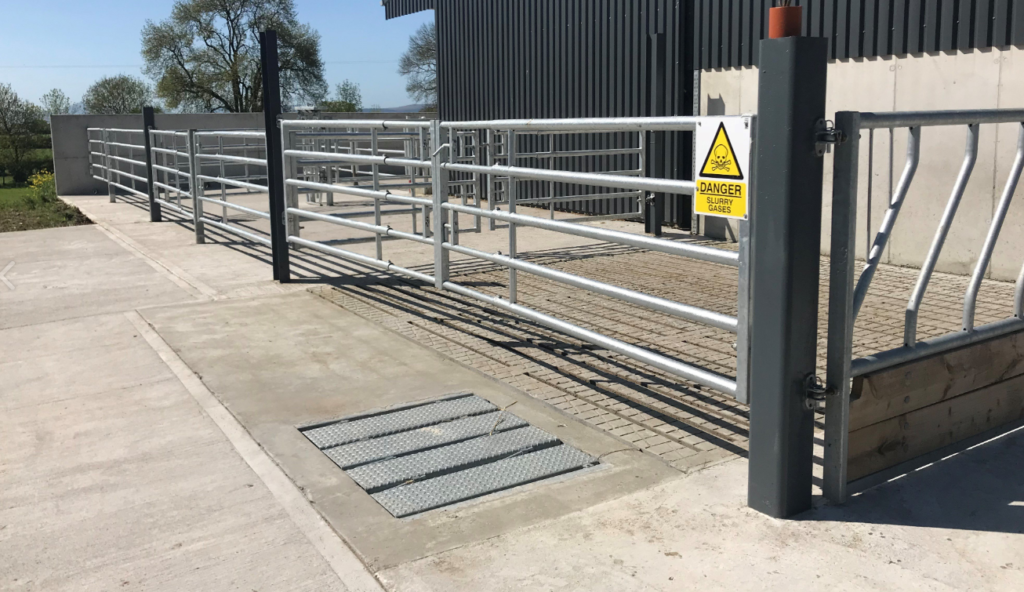As slurry season nears – some farmers will be able to spread from January 13 – the most important thing is to be safe.
Planning ahead is critical. AgriLand spoke to Pat Griffin senior inspector with the Health and Safety Authority (HSA) and he outlined a set of guidelines that should be followed when spreading slurry on your farm.
- Agitate on windy days;
- Remove all livestock and control pets;
- Open all doors and control access;
- Agitate/ventilate and stay away for 30 minutes;
- Work upwind at all times;
- Do not enter tanks – even when empty;
- Keep tank openings secure at all times;
- If possible, avoid agitating alone.
The HSA recently designed a sign and sticker outlining these guidelines. Pat suggested that farmers make a copy of the sign and place a sticker on the agitator or the back of the slurry spreader.
The sign can be downloaded by clicking here
The HSA spent a significant amount of time deciding on the list above and Pat Griffin explained that planning and preparation is crucial when spreading slurry.
We spent a lot of time identifying specific bullet points that would keep people safe and that is the definitive list. If people follow that they have a huge chance of not being affected.
Planning
“Planning is where farmers should start – looking at the weather and the equipment,” according to Pat.
“The second thing is to follow all of those bullet points in relation to spreading and the third thing is that when they go out to a field to spread to make sure the tank is secured.”
Ventilation is crucial
Weather in recent days has been very calm. This is not suitable for slurry spreading according to Pat.
“The problem at the moment is a lot of the days are very calm and when you have calm and frosty weather the gas can be released and it can stay around the area for a lot longer than normal.
If there’s a good breeze and you stand with the wind at your back the wind will take the gas away from you and that’s why we ask people to agitate on a windy day.
Opening doors and ventilating is extremely important.
“If there is wind at your back the wind has somewhere to go. If wind doesn’t have somewhere to go it won’t take away the gas so you have to have the doors open,” Pat added.
Removing all livestock and controlling pets
In order to keep both farmer and animals safe it is essential to relocate livestock when spreading slurry, Pat explained.
“If you leave livestock in the shed and you start to agitate sometimes the animals go down and the farmer automatically goes in to try and help them and then he/she goes down.
“If you have a dog and the dog goes in or collapses the farmer can often run in to get the dog and the farmer collapses themselves.
Stay away for 30 minutes
“Normally, with a reasonably-sized tank most of the gas will have gone within 30 minutes of agitation because the gas is held in the liquid similar to the gas in a coke bottle and once you shake it and open it 90% of the gas goes very quickly.
We would recommend staying away for 30 minutes.
Do not enter the tank
Pat explained that he knows some farmers have entered the slurry tank when it is empty in order to sweep slurry out of the corners. This is madness.
“That’s crazy because hydrogen sulphide – which is the gas that kills – is heavier than air and it will normally lie at the bottom of the tank.
Even if the tank is empty, if there’s a little bit of slurry in there it will still generate gas and you might have hydrogen sulphide gas sitting at the base of the tank – maybe 1-1.5ft.
“If you go in with a brush and start sweeping around it moves the gas up and your head is in a downward position when you’re sweeping and you’re breathing heavily as well.
It’s actually a deadly situation to go into a tank like that.
Secure tank openings
Securing the opening of slurry tanks is crucial to keeping people safe on the farmyard while spreading the load. Pat explained that people agitating, filling a load and leaving the tank open when spreading is a big problem.
“People fall in while they’re away so we try to encourage them to have a grid on the opening so that the hose can fit through the grid. They can take a load and off they go. They don’t have to worry about people falling in because there’s a grid on it.
Safe and suitable tractor
“There’s a lot of risks with slurry handling. You must make sure the tractor is matched with the tanker – that the tractor is big enough to handle the tanker.
You have to make sure that the PTO is properly guarded.
“You also have to make sure that the tractor is in good order and that you’ve got good brakes because you’re going to have quite a load behind it going into fields and onto slopes.
There’s a lot of things to think about.




